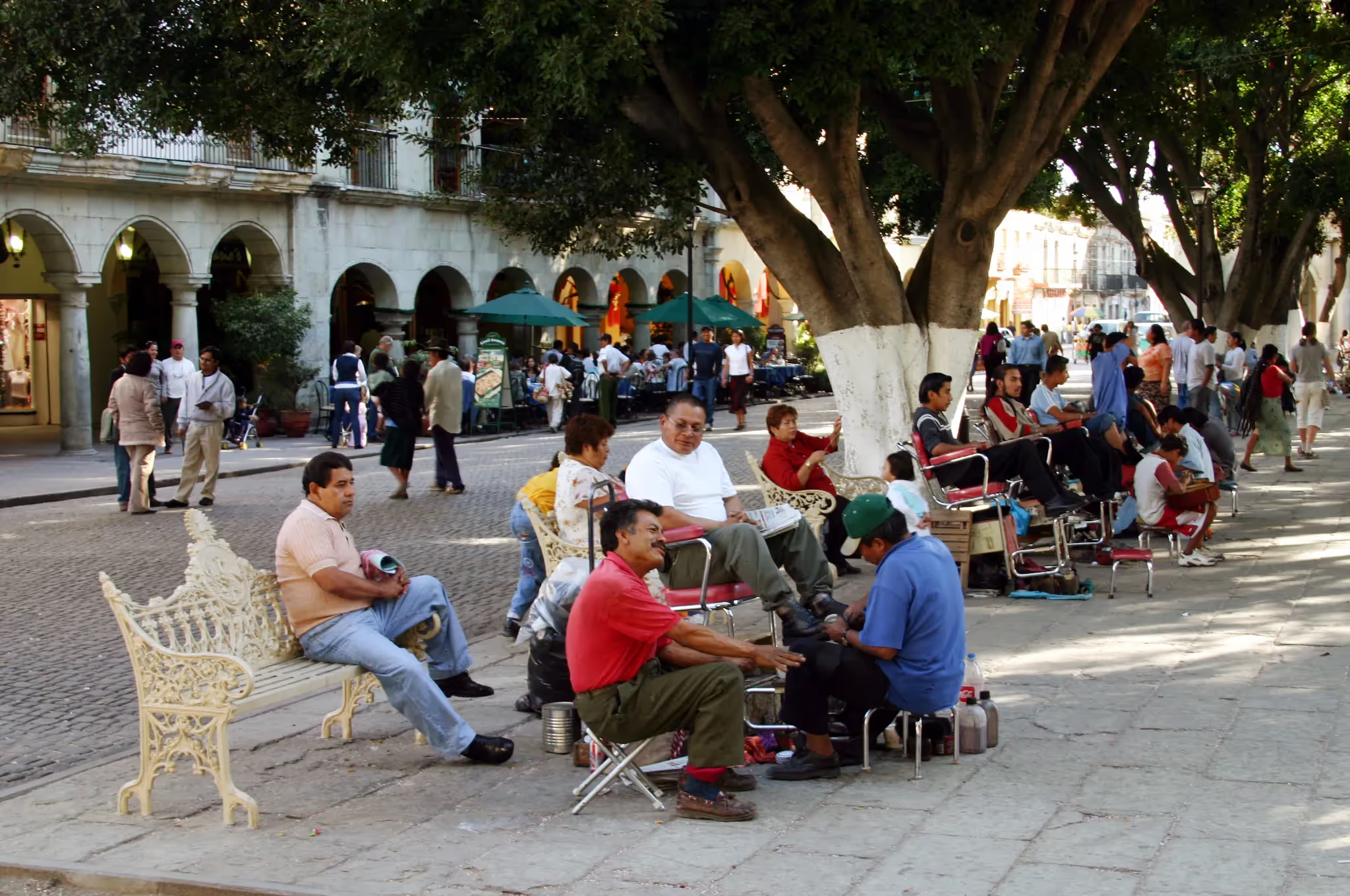A biweekly newsletter with public space news, resources, and opportunities.
A curated dispatch on all things public markets plus the latest announcements from the Market Cities Program.
Please note that these Hall of Shame nominations were written in a moment in time (most over a decade ago) and likely have since changed or even been transformed. If the above entry is now great, or still not so great, go ahead and comment below on how it has evolved or nominate it as a great place.

The zocalo has been the heart of Oaxaca for nearly 500 years, since it was laid out by Juan Pelaez de Berrio and Alonso Garcia Bra

In Alonso Garcia Bravo’s masterplan for the city, the city of Oaxaca was designed around the Plaza de la Constitución--which is centrally located and easily accessible from the rest of the city. The connection of the plaza to the rest of the city is apparent in the five portals that are located along its edges, which each offer access to and from another part of the city. Because of its connection to the city’s different neighborhoods, the Plaza de la Constitutución serves as a natural meeting space for locals. Its design also incorporates ample seating and landscaping, providing shaded areas on the square and making it popular for those looking for a break from the heat. As the location of the state and local governments, Plaza de la Constitución is also the site for many national festivities and other state-funded programming such as weekly performances and public education initiatives. The plaza is also host to the vibrant Benito Juárez Market - a daily market in which shoppers can purchase local ingredients and watch traditional artisans craft their products. Together with the architecture and other programming on the square, the market makes The Plaza de la Constitución a culturally, historically, and politically rich site in the center of Oaxaca.
Designed by Juan Peláez de Berrio in the tradition of zócalos in colonial Spain, Plaza de la Constitución has been the central square in the city of Oaxaca for over 500 years. Like in other Spanish settlements in South America, Oaxaca’s zócalo was designed as a central square that would represent the two principle colonizing institutions and their power in the city: the church and the monarchy. It follows, then, that the dominant buildings on the city’s zócalo were the Catedral de Oaxaca and State Government Palace. Once the Plaza de la Constitución was established in 1529, Alonso Garcia Bravo used the plaza as point of reference by which to plan the rest of the city, giving it a central location in the new city. While the city of Oaxaca is no longer under Spanish rule, the Plaza de la Constitución has retained its importance to the civic and social life of the city. The historic Spanish core, including the public square, was designated a World Heritage Site by UNESCO in 1987 to preserve its historic architecture and 16th-century masterplan.



*Please note that these Hall of Shame nominations were written in a moment in time (most over a decade ago) and likely have since changed or even been transformed. If the above entry is now great, or still not so great, go ahead and comment below on how it has evolved or nominate it as a great place.